





| Dicyrtoma fusca (Lubbock, 1873) |






|
|
Scientific name: Dicyrtoma fusca (Lubbock, 1873) Common name: French name: Phylum: Arthropoda Class: Collembola Order: Symphypleona Family: Dicyrtomidae Size: 1,5-2 mm. Habitat: In damp places, under rocks, under logs, in the litter, often on the underside of dead leaves. Food: Decaying plant and animal materials Reproduction: Males deposit spermatophores (small capsules containing spermatozoa and attached to the substrate by a small peduncle) which are then collected by the females. Geographic area: Europe, Asia, introduced to North America and to New Zealand. |
Springtails of the Dicyrtomidae family shows a globulous body and eight ocelli on each side of the head, grouped to form a black spot. The antennae have 4 articles. The last one is very short. They can perform spectacular jumps using their furca under the tip of their abdomen. Dicyrtoma fusca is variable in colour, from reddish brown to pale yellow. Several variants are found and mainly Dicyrtoma fusca var. 1 which is generally reddish brown with a dark dorsal line, yellow markings on the flanks, long setae at the rear of the abdomen and long white claws at the tip of the legs. The eyes are black. There is a much rarer melanic form, almost totally black, Dicyrtoma fusca var. 2. At least you can find Dicyrtoma fusca var. rufescens, which is more or less dark reddish and which can be identified by its dual coloured eyes with black ocelli on a yellow eye patch. |
| [To know more about the Dicyrtoma fusca] [Next picture] [Top] |
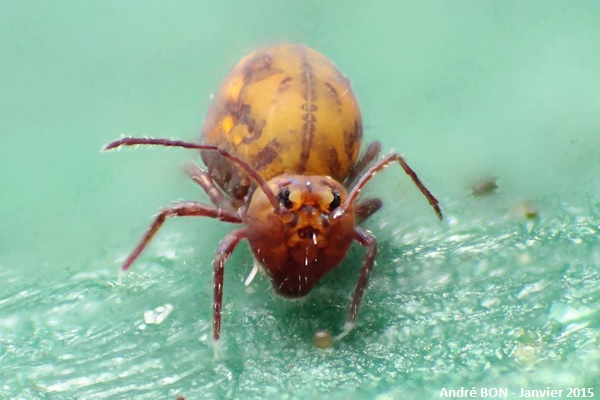
|
The underside of the cover of the compost tank allows me to observe Dicyrtoma fusca. It cohabits here with Dicyrtomina saundersi throughout the winter. The small size of these springtails makes it difficult to shoot pictures. In order to get a correct magnification I have used a 24mm lens, mounted the reverse way and with the aperture blocked at F/10. This aperture is a trade-off to increase the depth of field while keeping enough light through the viewfinder of the DSLR camera. The use of flash light is mandatory. In order to increase the depth of field on these high-magnification pictures I have started to use the "focus stacking" method. This picture is the merge of 8 shots each with a small focus shift. I have used the CombineZP software which has kept the sharp areas of each shot. You need then to make some manual corrections to remove the artefacts. You can clearly see here the very short third article of the antennae, the dark dorsal line, the yellow marking on the flank and the long and thin white claws. |
| [To know more about the Dicyrtoma fusca] [Next picture] [Previous picture] [Top] |
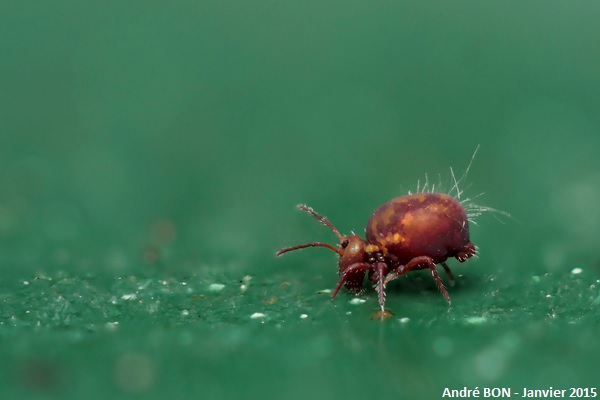
|
This picture is the merge of 9 shots each with a small focus shift. For this you need a springtail which remains totally immobile during at least one minute. This not clearly visible to the naked eye but the merge of pictures often shows a movement of the antennae. This is where you need to make some manual corrections, but only by copying and pasting areas of the original photos. |
| [To know more about the Dicyrtoma fusca] [Next picture] [Previous picture] [Top] |
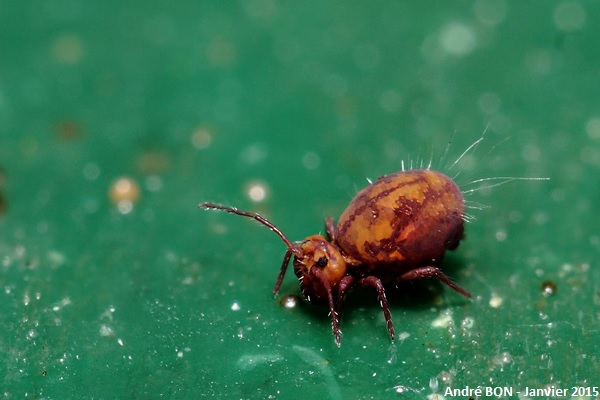
|
This picture is the merge of 6 shots each with a small focus shift. |
| [To know more about the Dicyrtoma fusca] [Next picture] [Previous picture] [Top] |
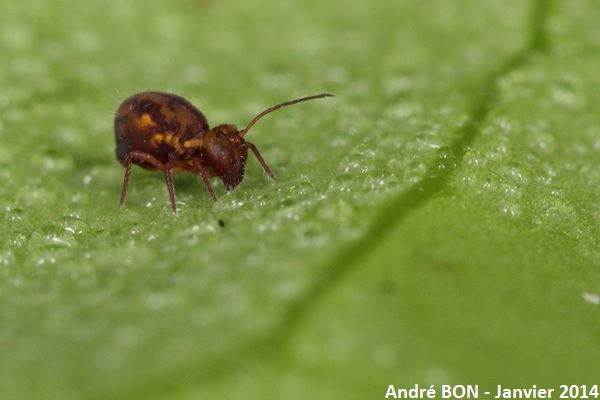
|
I had initially listed this picture as the dark form of Dicyrtomina saundersi, but with a closer look you can see the dark dorsal lines and the yellow markings on the flanks. |
| [To know more about the Dicyrtoma fusca] [Next picture] [Previous picture] [Top] |
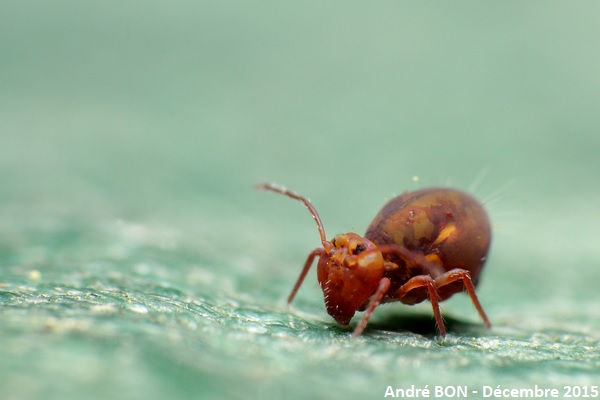
|
All the specimens I observe show rows of white hairs on the face. |
| [To know more about the Dicyrtoma fusca] [Previous picture] [Top] |
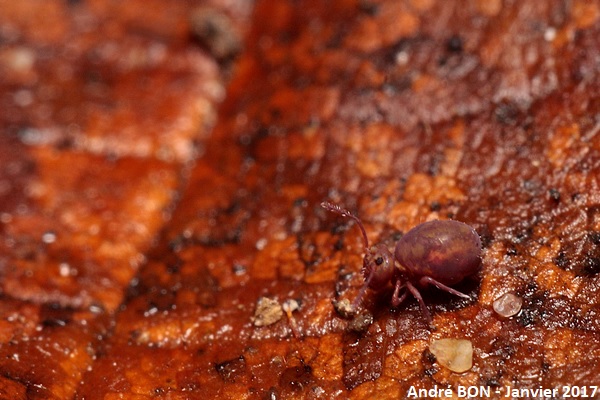
|
The colour of this springtail provides a very efficient camouflage on some dead leaves. |